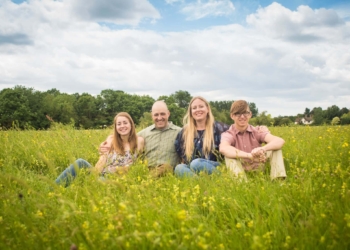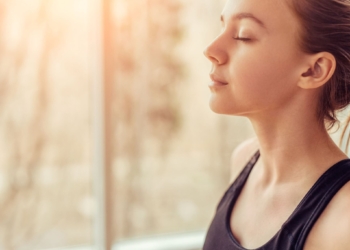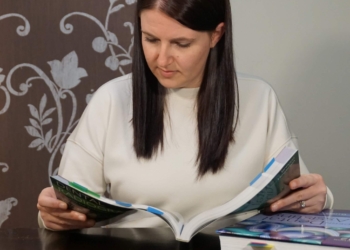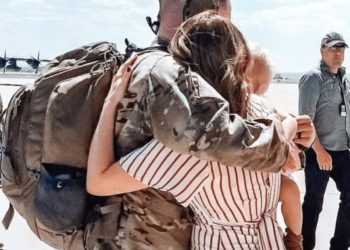One male spouse remembers a first experience with the military spouse community five years, and three moves, ago that was less than inviting.
When Army spouse Joey Moehrholt went to a family readiness group introductory session after basic training graduation, the first thing heard was, “Hey, ladies,” followed by a lesson on how to be a good mother, spouse, and homemaker.
“The Army’s language was very inclusive. The spouse language was very exclusive,” Moehrholt said.
And it dips into the employment field, Moehrholt says, where many male military spouses feel they have to prove they are a military spouse because the assumption is if you are male, you’re a veteran or the service member — not the spouse.
In the 2019 Department of Defense Survey of Active Duty Spouses, 9.1% of spouses who participated were male, showing a diversity that even 20 years ago wasn’t there. By measuring differences, we can see them more clearly.
What isn’t measured, however, is the percentage of spouses who are LGBTQ+. When “don’t ask, don’t tell” was repealed in 2011 and same-sex spouses became eligible to receive benefits in 2013, many new military spouses were welcomed into the community.
Read: Organizations offer support, connect diverse military families
But what does it look like now, in 2021, to be a gay, male military spouse?
It’s not easy, and it hasn’t improved much, says Moehrholt, who has been married for five years and in the relationship for 10. Moehrholt makes this distinction because many people judge a relationship by years married, instead of years together. The couple married just before becoming a military family and have moved three times in the last five years.
While the benefits of being a military spouse may not be easily accessible to men, the challenges are. They still move frequently, giving up careers and friends along the way. And, like their female counterparts, they each bring something different to the community — a passion they can share with others, a skill that can benefit everyone, or a differing opinion to add to the discussion.
Finding community and personal growth
Yoga was one area where Moehrholt found personal growth, including helping discover a welcoming community and a career path as a yoga teacher. Moehrholt has also been able to connect with other military spouses because of their shared interest in yoga.
“When one, anyone, is looking for community, we always look for the common thread,” said Army spouse Maralis Self. “We understand that within the military community, we can be unseen or unknown, as LGBTQ spouses. I think one of the beauties of yoga is that it takes you within, connects you to self, and encourages the pursuit of peace.”
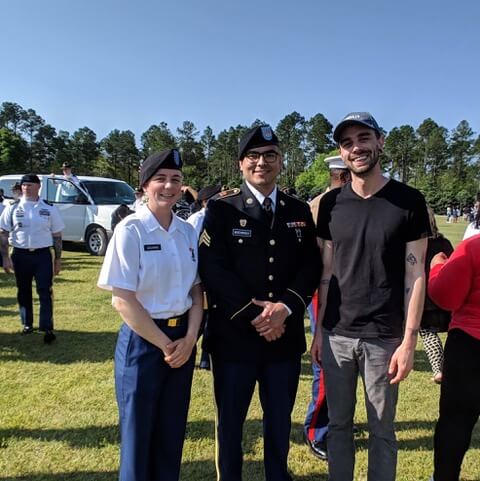
Fitness in general is a way for people to connect quickly. Yoga is the way Self and Moehrholt have created bonds, but the same thing can be said for those practicing other sports.
“When you enter a room of people practicing yoga, you know that the possibility of connection exists because you are all there to spend time on your mat, regardless of what reason you have for being there that day. There is community in that,” Self said. “The yoga community can be incredibly welcoming and a safe space to land, for anyone.”
There’s room for everyone
Outside of yoga, however, Moehrholt has found some barriers to the many programs designed to help military spouses.
Moehrholt says traditional gender roles play a large part in what is available on military installations for spouses. For example, things held during the day are typically for parents and children, spouse clubs cater events towards women, and men are left with things like golfing or coaching sports teams.
Now stationed at Fort Hood, Moehrholt suggests change is simple, like not being afraid to focus on men for events and activities.
“It’s okay to make targeted events for female spouses,” Moehrholt said. “I want to challenge more organizations to step out of their comfort zone and say, ‘We’re focusing on men for this event, but female spouses, you have this event. Everybody has this event.’”
Read comments















